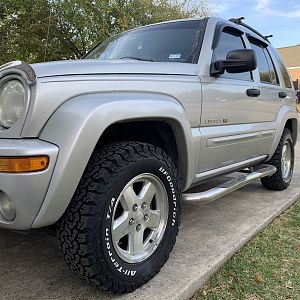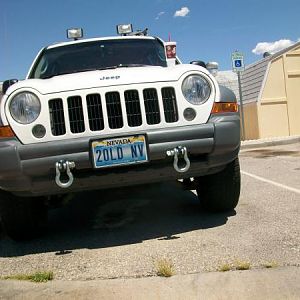Fuel cap venting - basic fuel cap venting theory also applies to the gasoline-fueled vehicles
Barometric pressure is Atmospheric pressure, measured in pounds per square inch actual, or psia, 0 - 15psia (rounded up from 14.696psia mean) - 14.696psia BP, or one atmosphere, = 1 BAR
Vacuum is any reduction in atmospheric pressure, measured in inches on the mercury column, or "HG, where 0"HG vacuum = 15psia, and 30"HG vacuum = 0psia - 2"HG vacuum = 1psia, so 2"HG would be (15psia - 1psia) = 14psia
Gravity and atmospheric pressure on the surface of a liquid enhances an effect known as surface tension - aeration is ability of a liquid to foam - thus water boils at ~220* at sea level* - water boils at lower temperature as altitude increases, higher temperature as altitude decreases - your radiator cap is proof enuff of that, as greater pressure increases surface tension, raising coolant boiling point - also ensures the t-stat opens at the rated temperature, as IIRC, water boils at ~202*F in Denver, the mile high city - always use a thermometer in the pan of boiling water when verifying t-stat operation in the kitchen
Foaming is aeration you can see, the bubbles being large enuff to break thru the surface tension of the liquid - as the bubbles decrease in size, they have greater difficulty in breaking surface tension to emerge thru the surface, thus remaining submerged within the liquid
Diesel fuel foams easily - the hotter the ambient temperature, the warmer the fuel, the greater the foaming, the greater the evaporation, so the tank pressurizes easily in warm climate, but never more than 1psi above BP, if the fuel cap is functional - conversely, Diesel fuel foams less when cold, so the tank pressurizes less easily in cold climes
Gasoline, being more volatile than Diesel fuel, reacts to temperature more due to increased evaporization, thus pressurizing the tank more - the 1psia pressure vent is as important here as that for Diesel fuel
Actual fuel cap venting is (+/- 1psia) - 1psia = 2"HG vacuum, so your fuel cap will vent at (rounding Barometric pressure to 15psia) 16psia overpressure, also at 14psia underpressure
When tank is full of fuel, little free-air volume remains between the surface of the fuel and the top of the tank, so any hiss will be small - as fuel level drops, free-air volume above the fuel increases, so the hiss will be greater - this indicates greater volume of air in the tank, not greater pressure or vacuum, where 1ft3 @ 1psia vents quicker than 35ft3 @ 1psia
The tank and cap was designed to also maintain ~2"HG vacuum, intended to reduce aerated fuel, which is foaming you cannot see, the bubbles being too small to break thru fuel surface tension - since each bubble below the surface of the fuel is a tiny microcosm of atmospheric pressure, any reduction in BP above the surface will reduce surface tension, allowing the smaller bubbles to break thru, thereby reducing aeration
The fuel cap should be checked regularly to ensure it meets correct pressure\vacuum venting specs - can use a radiator-pressure hand pump and a vacuum hand pump
*Note: the boiling point of H20 is ~212*F\100*C at mean sea level, tho the actual temp depends on altitude, which relates to Barometric pressure - the downer you go, the upper the temp, for instance Death Valley - with global warming, the increasingly warm atmosphere is expanding, becoming less dense, such that mean Barometric Pressure is decreasing - AGA mean BP standard reference of 14.72xpsia at sea level was changed to 14.696, accordingly - mean sea level will be changing as polar ic caps melt, further decreasing BP as less ice means warmer air
Barometric pressure is Atmospheric pressure, measured in pounds per square inch actual, or psia, 0 - 15psia (rounded up from 14.696psia mean) - 14.696psia BP, or one atmosphere, = 1 BAR
Vacuum is any reduction in atmospheric pressure, measured in inches on the mercury column, or "HG, where 0"HG vacuum = 15psia, and 30"HG vacuum = 0psia - 2"HG vacuum = 1psia, so 2"HG would be (15psia - 1psia) = 14psia
Gravity and atmospheric pressure on the surface of a liquid enhances an effect known as surface tension - aeration is ability of a liquid to foam - thus water boils at ~220* at sea level* - water boils at lower temperature as altitude increases, higher temperature as altitude decreases - your radiator cap is proof enuff of that, as greater pressure increases surface tension, raising coolant boiling point - also ensures the t-stat opens at the rated temperature, as IIRC, water boils at ~202*F in Denver, the mile high city - always use a thermometer in the pan of boiling water when verifying t-stat operation in the kitchen
Foaming is aeration you can see, the bubbles being large enuff to break thru the surface tension of the liquid - as the bubbles decrease in size, they have greater difficulty in breaking surface tension to emerge thru the surface, thus remaining submerged within the liquid
Diesel fuel foams easily - the hotter the ambient temperature, the warmer the fuel, the greater the foaming, the greater the evaporation, so the tank pressurizes easily in warm climate, but never more than 1psi above BP, if the fuel cap is functional - conversely, Diesel fuel foams less when cold, so the tank pressurizes less easily in cold climes
Gasoline, being more volatile than Diesel fuel, reacts to temperature more due to increased evaporization, thus pressurizing the tank more - the 1psia pressure vent is as important here as that for Diesel fuel
Actual fuel cap venting is (+/- 1psia) - 1psia = 2"HG vacuum, so your fuel cap will vent at (rounding Barometric pressure to 15psia) 16psia overpressure, also at 14psia underpressure
When tank is full of fuel, little free-air volume remains between the surface of the fuel and the top of the tank, so any hiss will be small - as fuel level drops, free-air volume above the fuel increases, so the hiss will be greater - this indicates greater volume of air in the tank, not greater pressure or vacuum, where 1ft3 @ 1psia vents quicker than 35ft3 @ 1psia
The tank and cap was designed to also maintain ~2"HG vacuum, intended to reduce aerated fuel, which is foaming you cannot see, the bubbles being too small to break thru fuel surface tension - since each bubble below the surface of the fuel is a tiny microcosm of atmospheric pressure, any reduction in BP above the surface will reduce surface tension, allowing the smaller bubbles to break thru, thereby reducing aeration
The fuel cap should be checked regularly to ensure it meets correct pressure\vacuum venting specs - can use a radiator-pressure hand pump and a vacuum hand pump
*Note: the boiling point of H20 is ~212*F\100*C at mean sea level, tho the actual temp depends on altitude, which relates to Barometric pressure - the downer you go, the upper the temp, for instance Death Valley - with global warming, the increasingly warm atmosphere is expanding, becoming less dense, such that mean Barometric Pressure is decreasing - AGA mean BP standard reference of 14.72xpsia at sea level was changed to 14.696, accordingly - mean sea level will be changing as polar ic caps melt, further decreasing BP as less ice means warmer air
Last edited:



![091409 1417[01]](/data/xfmg/thumbnail/2/2276-9b770e0a6a214044b06360f2c8854aaa.jpg?1623784618)






